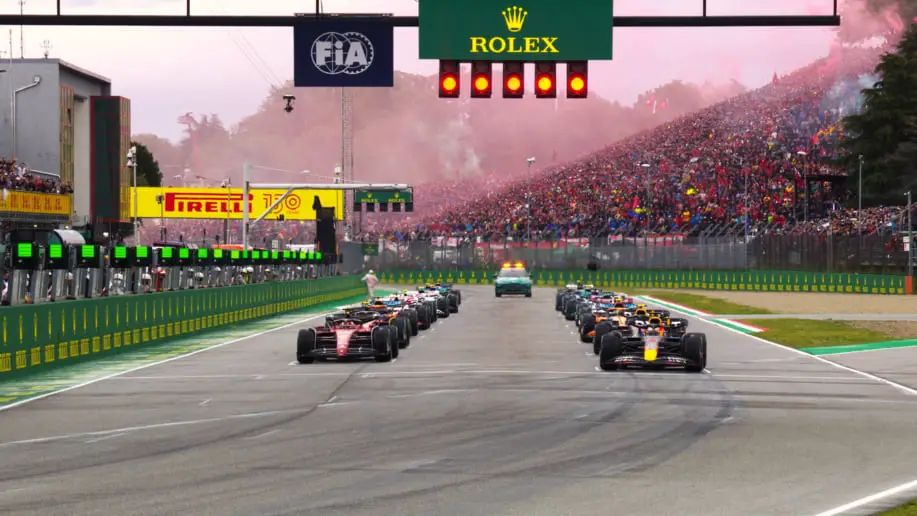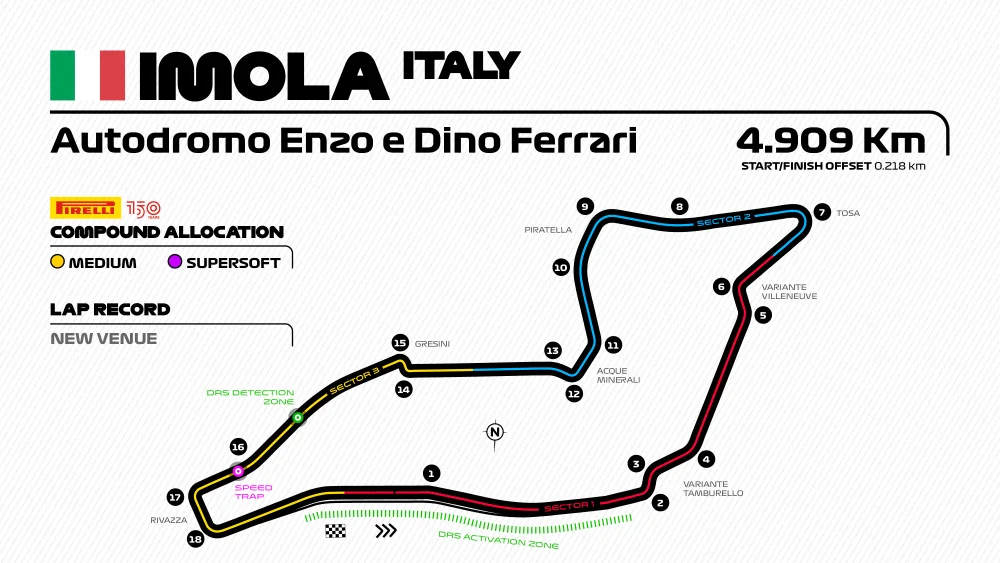The Imola Grand Prix circuit is officially known as the Autodromo Internazionale Enzo e Dino Ferrari. It is one of the most iconic and challenging tracks in the Formula 1 calendar. With a blend of rapid straights and demanding chicanes, it presents both a technical and physical challenge for the drivers.
Characterized by its unique blend of rapid straights and technical chicanes, Imola challenges even the most seasoned drivers. The circuit’s reputation is a testament to the blend of skill, strategy, and stamina required to conquer its tarmac. With each corner and straight, drivers dance on the edge of physics, pushing their machines and their limits.
From the iconic Tamburello corner to the demanding Rivazza turns, this article delves deep into the circuit’s intricacies., offering insights on the optimal driving lines, entry and exit speeds, and the physical demands placed on drivers. This guide will serve both ardent fans and casual readers, aiming to unravel the essence of what makes Imola a pinnacle in the world of motorsport.
F1worldwide.com Recommends
- Monaco F1 Grand Prix – the Ultimate Guide
- Canadian Grand Prix History | F1 Legends, Facts and Highlights
- Canadian Grand Prix F1 : A Lap Around the Circuit Gilles Villeneuve
- The Ultimate Guide to the Spanish Grand Prix
- Spanish Grand Prix Circuit: A Driver’s Perspective
Characteristics of the Imola GP Track
Imola is characterized by its high-speed sections, interspersed with technical and challenging chicanes. Tire degradation can be significant due to the lateral loads imposed by fast corners and the aggressive curbs.
Drivers often opt for harder compounds to resist wear while maintaining grip.
Imola GP – Speeds on the Straights

The main straight and the back straight before Variante Alta see F1 cars reaching speeds of up to 340km/h (211 mph).
These straights offer crucial overtaking opportunities, but it’s the subsequent corners where skills are tested.
Imola GP – Corner-by-Corner Analysis
Check out the intricacies that F1 drivers have to contend with the following corner by corner analysis.
Imola GP – Tamburello (Turns 1-3)
The first three turns form part of the Tamburello complex.

- Entry Speed: Around 300km/h.
- Braking: Hard braking is essential, with drivers enduring 4-5G forces.
- Driving Line: Take a wide approach, clipping the first apex, run wide in the middle, and then hug the last part.
- Exit Speed: Approximately 220km/h.
Imola GP – Villeneuve (Turn 5)
Named after the legendary Canadian river Gilles Villeneuve.
- Entry Speed: Roughly 220km/h.
- Braking: A brief and sharp deceleration.
- Driving Line: Keep to the right, and then clip the curb as you turn left.
- Exit Speed: About 180km/h.
Imola GP – Tosa (Turn 7)
This is a sharp harpin turn to the left.
- Entry Speed: 170km/h.
- Braking: Hard downshift to the second or third gear.
- Driving Line: Tight inside line.
- Exit Speed: 150km/h.
Imola GP – Piratella (Turn 9 and 10)
At the end of a short straight, drivers enter this corner at 250km/h
- Entry Speed: Approximately 250km/h.
- Braking: Mild.
- Driving Line: Late apex.
- Exit Speed: Around 210km/h.
Imola GP – Aquaminerale (Turns 11,12 & 13)

- Entry Speed: 210km/h.
- Braking: Sharp for the chicane.
- Driving Line: Close to the curbs but avoid unsettling the car.
- Exit Speed: 190km/h.
Imola GP – Gresini (Turns 14 & 15)
Gresini is the new left/right chicane before Rivazza.

- Entry Speed: 240km/h.
- Braking: Hard.
- Driving Line: Cut the chicanes carefully, balancing the car.
- Exit Speed: 200km/h.
Imola GP – Rivazza (Turns 16, 17 & 18)
- Entry Speed: Around 200km/h.
- Braking: Decelerate sharply.
- Driving Line: Late apex on both.
- Exit Speed: 160km/h for the second corner.
Physical Demand on the Driver
The consistent high-speed nature of Imola, combined with the necessity for hard braking and rapid changes in direction, exerts a tremendous physical demand on the drivers. G-forces can peak around 5G during heavy braking zones, especially in Tamburello.
These extreme forces mean that a driver’s neck, core, and reflexes are continually tested. The physical and mental stamina required to maintain precision, especially during the final laps, is a testament to the elite conditioning of F1 drivers.
Conclusion
The Imola circuit, with its rich history and unique blend of speed and technicality, continues to be a favorite among drivers and fans alike. The track rewards precision, bravery, and a deep understanding of the car’s dynamics. When an F1 driver completes a lap around Imola, they’ve not just traveled 4.9 km – they’ve navigated through one of motorsport’s most demanding challenges.

